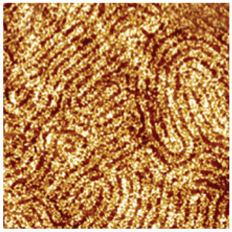Published online by Cambridge University Press: 09 October 2020

Self-assembly, a process in which molecules, polymers, and particles are driven by local interactions to organize into patterns and functional structures, is being exploited in advancing silicon electronics and in emerging, unconventional electronics. Silicon electronics has relied on lithographic patterning of polymer resists at progressively smaller lengths to scale down device dimensions. Yet, this has become increasingly difficult and costly. Assembly of block copolymers and colloidal nanoparticles allows resolution enhancement and the definition of essential shapes to pattern circuits and memory devices. As we look to a future in which electronics are integrated at large numbers and in new forms for the Internet of Things and wearable and implantable technologies, we also explore a broader material set. Semiconductor nanoparticles and biomolecules are prized for their size-, shape-, and composition-dependent properties and for their solution-based assembly and integration into devices that are enabling unconventional manufacturing and new device functions.
This manuscript has been authored by an author at Lawrence Berkeley National Laboratory under Contract No. DE-AC02-05CH11231 with the US Department of Energy. The United States Government retains, and the publisher, by accepting the article for publication, acknowledges, that the United States Government retains a nonexclusive, paid-up, irrevocable, worldwide license to publish or reproduce the published form of this manuscript, or allow others to do so, for US Government purposes.